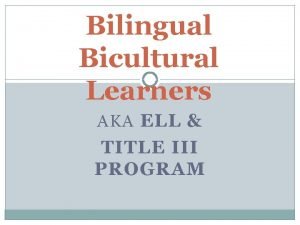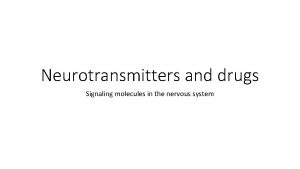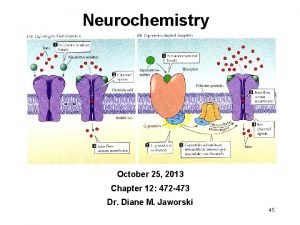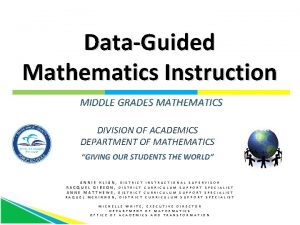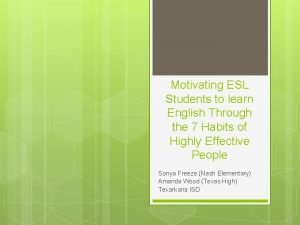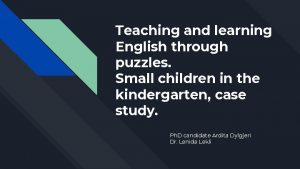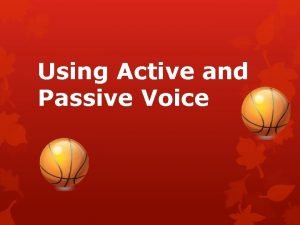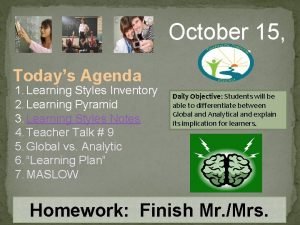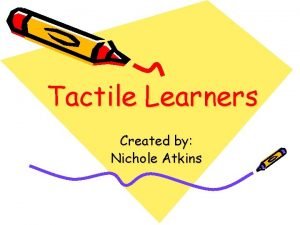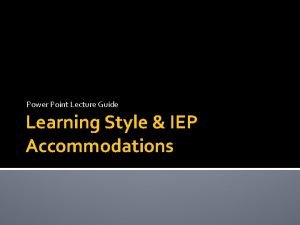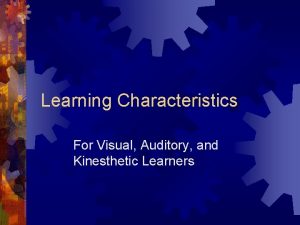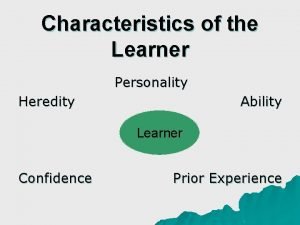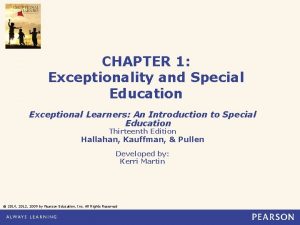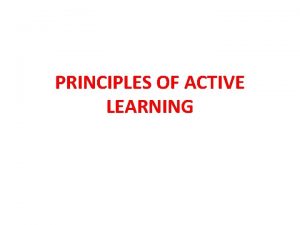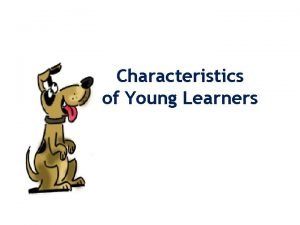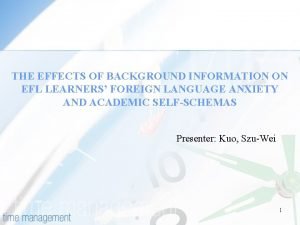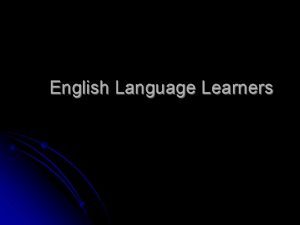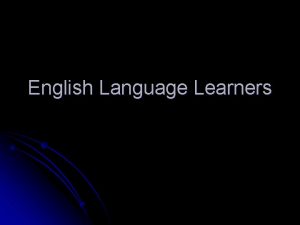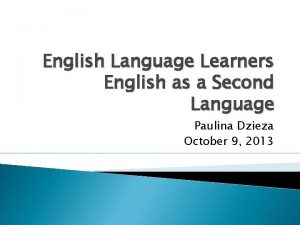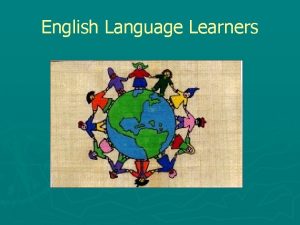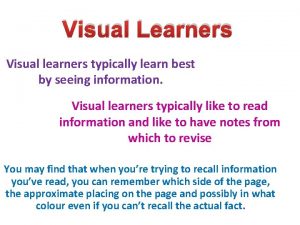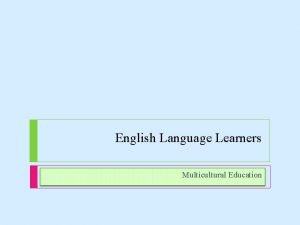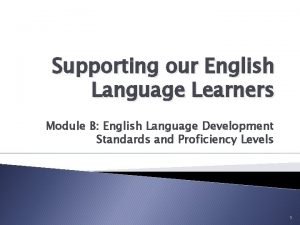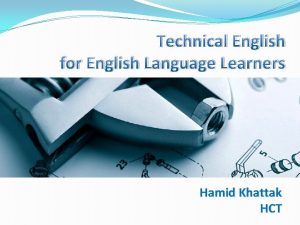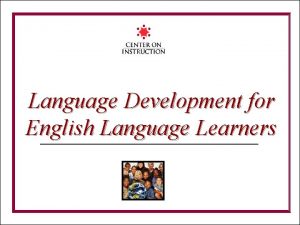English Language Learners Learn Another Language l http











































- Slides: 43

English Language Learners

Learn Another Language l http: //youtu. be/c. Coc. V 9 u. FMh. I l http: //youtu. be/gm. OTp. IVxji 8 l http: //youtu. be/c. UEk. OVd. Uj. Hc

ESL Statistics The 2012 -2103 the percentage of public school students in the United States who were English language learners was 9. 2 percent, or an estimated 4. 4 million students) This is an increase of 40. 7 percent enrollment since 1994. Limited English Proficient (LEP) students are the US fastest-growing population and are expected to make up one out of every four students by 2025. (US Gov, 2007) The number of ESL students in US public schools has almost tripled over the past decade (Goldenberg, 2006). One-fourth of the school age students in the United States were from homes where a language other than English was spoken. (Crawford 2004)

Center for Research on Education, Diversity and Excellence 2015: l The school age population (K-12) will reach about 40% ESL in about 20 years l 46% of all schools in the United States have English as a second language students. l Certain states have larger numbers of ESL students: 87% of Arizona schools, 90% of California schools 96% of Hawaii schools have ESL students West Virginia has the lowest 0. 7% l l l Only 18% of all schools offer bilingual education programs and 43% offer ESL programs. U. S. Department of Education, National Center for Education Statistics. (2015). The Condition of Education 2015 (NCES 2015 -144), English Language Learners .

A Task Force on Children Out of School 1969 l The Way We Go to School Report, 1970 l The Task Force concluded that there was a minimum of 2, 650 Spanish-speaking children who were not being educated l Had the Task Force used the high end figures for the Spanish – speaking population of 32, 000 (by the Mayor’s Office for Human Rights) the total number of children out of school would range as high as 7, 8000. l The conclusion was that these thousands of Spanish –speaking children did not attend school primarily because there were no programs for them. BPSD acknowledged this in its Title VII E. S. E. A, Bilingual Education Program Proposal, (BPS, 1968)

History of ELL Civil Rights Act of 1964 Office of Civil Rights prohibits discrimination based on race, color and national origin.

Lau V. Nichols 1970 The US Supreme Court directed school districts to take steps to help LEP students overcome language barriers and to ensure that they can participate meaningfully in the district’s educational programs.

Federal Regulations l Transitional bilingual education emerged across the country l TBE was a program model in which instruction is provided in the student’s native language decreasing in favor of English instruction as the student gains English proficiency l Under the Federal regulations, districts were required to provide TBE programs if they had 20 students of the same language. l Districts could offer “curriculum offerings of a supportive nature as appropriate”

Question 2 became law as Chapter 386 of the Acts of 2002 l Referendum in December, and was implemented across the state in the fall of 2003. l The referendum in Massachusetts was part of the U. S. English Only movement that spearheaded successful ballot referendum initiatives in several states under the slogan “English for the children. ” l California was the first state to adopt English only in its Proposition 227 in 1998, followed by Proposition 203 in Arizona in 2000. l The 2002 Massachusetts version, Question 2 (often called the Unz Initiative, named after Ron Unz, the California businessman who spearheaded and financed the initiative). (Tung et al. , 2009, p. 6)

Sheltered English Immersion l The new instructional model of “English Only”. This is also called structured English immersion. l Required that teachers for pull out instruction in English had to be appropriately instructed (English as A second language certification, or bilingual certification was grandfathered).

What is ESL Instruction? l ESL instruction is explicit, direct instruction about the English language intended to promote English Language acquisition by LEP students and to help them “catch up” to their student peers who are proficient in English.

SEI What type of instruction should LEP students receive? An SEI program has two components: English as a second language (ESL) Sheltered content instruction

What is a limited English proficient LEP student? An (LEP) student is defined by the Department of Education as a student whose first language is a language other than English and who is unable to perform ordinary classroom work in English. SIFE Student A student with interrupted formal education

What is WIDA? World Class Instructional Design and Assessment l (WIDA) is a national consortium made up of 27 states that have adopted a system of curriculum standards and assessment for ELLs. l Massachusetts, adopted the WIDA standards for English language development at the start of the 2012 -2013 school year. l WIDA also utilizes an assessment tool called the ACCESS (Assessing Comprehension and Communication in English State-to-State for English Language Learners), which measures English language proficiency and is aligned with the WIDA standards. ACCESS will replace the MEPA (Massachusetts English Proficiency Assessment – final administration spring 2012).

What is RETELL? l RETELL stands for "Rethinking Equity and Teaching for English Language Learners. " MA adopted RETELL in 2012. l ELL’s are our state's fastest growing student subgroup and the "proficiency gap" is greatest and most persistent for these students. l It is the name for the new approach that the Department is designing to transform the teaching of English language learners (ELLs) in the Commonwealth. l It combines a new system of curriculum standards and assessment (see question A 5), endorsement and licensure requirements, professional development, and related supports for core academic teachers of ELLs and the administrators who support and supervise them (principals, assistant principals and supervisor-directors). l RETELL is one of several efforts being undertaken by the Department to close the proficiency gap that exists among some groups of students.

What impact will RETELL have on me as an educator? l If you are a core academic teacher (defined in the proposed regulations as early childhood, elementary, teachers of students with moderate and severe disabilities, English, reading language arts, mathematics, science, civics and government, economics, history and geography) you will be required to earn the SEI Teacher Endorsement. l If you are a principal, assistant principal, or supervisor-director who supports and supervises core academic teachers, you will be required to earn the SEI Administrator Endorsement. l All educators licensed at the Professional stage will be required to earn a minimum of 15 PDPs related to ESL/SEI (and 15 PDPs related to special education) to renew that license in every renewal cycle ending on or after July 1, 2014. l All core academic teachers should be aware that beginning July 1, 2016, no district will be able to assign you to a classroom with an ELL if you do not have an SEI endorsement or will meet the requirements within a year.

Castañeda v. Pickard l The US Department of Justice and the US Department of Education’s Office for Civil Rights also use this case to determine ELE program compliance under the federal EEOA and Title VI laws respectively. l The educational theory underlying the language assistance program is recognized as sound by some experts in the field or is considered a legitimate experimental strategy. l The program and practices used by the district are reasonably calculated to implement effectively the educational theory adopted by the district. l The program succeeds when producing results indicating that students’ language barriers are actually being overcome. l Discuss Lexington CPR report

Initial Identification l Step 1: Administer a home language survey to all newly enrolling students. l Step 2: Assess the English proficiency of a student when the answer to any of the questions on the Home language Survey is a language other than English. A screening test is not necessary for the students who come from another Massachusetts district or another WIDA state with ACCESS results if the test was administered within the last calendar year. l Step 3: Determine whether the student is an ELL using screening test results and make initial placement decisions. l Step 4: Notify parent and/or legal guardian of language screening assessment results and initial placement. Inform parent of the right to “opt out” or to secure an SEI program waiver in a language the parent can understand, to the extent practicable. l Step 5: Code the student determine as EL in all SIMS reports submitted to DESE

Recommended Periods of ESL Instruction for Composite Access Scores Pre-K Programs are not required to offer ESL classes l l l Foundational (WIDA Level 1, Level 2 and Level 3) (Entering, Emerging, Developing) Level 1 – Beginning/ Entering Lever 2 –Emerging Level 3 Developing At least two to three periods (a period is not less than 45 minutes) per day of direct ESL instruction, delivered by a licensed ESL teacher Transitional Level s - At least one period (a period is not less than 45 minutes) per day of direct ESL instruction, delivered by a licensed ESL teacher , Level 3. 5 Transitioning Level 4 Expanding Level 5 Bridging Level 6 Reaching Students at WIDA Level 6 should no longer be classified as ELLs and should participate in the general education program alongside fluent or native English speaking peers. Their progress must be monitored for two years after their ELL classification is removed. Such students should also receive additional supports and services if needed.

FLEP student l l l Level 6 Reaching Students at WIDA Level 6 should no longer be classified as ELLs and should participate in the general education program alongside fluent or native English speaking peers. Their progress must be monitored for two years after their ELL classification is removed. Such students should also receive additional supports and services if needed. Former Limited English Proficient student fails to make academic progress as measured by grades and assessments during the first 3 -6 months after not being classified as LEP, the student’s instructional programming should be redesigned and the student should be considered for reclassification of LEP.

ELL Annual Assessment l Students must be assessed in reading writing, listening, and speaking English – Access Testing l Students must be assessed using the following assessments MCAS Access testing

Mandated Assessments l All LEP students must take ACCESS proficiency test and MCAS. l Department guidelines allow students who are in their first year in the country to forego the ELA grade 3 reading and ELA MCAS in grades 4, 7, and 10. l Students in their first year in the country who take these tests will not be included in the district disaggregated student totals for this subgroup. l All students will take MCAS math and science / technology/ engineering regardless of then they arrive in the United States.

Grade 10 ELL Students l Spanish speaking LEP students in grade 10 who have been enrolled in school in the continental US for fewer than three years may choose to take the English /Spanish version of the grade 10 Mathematics retest if he/ she can write in Spanish or near grade level. l English/Spanish versions of the Mathematics test are available for the grade 10 test and retest only. l The designated test administrator must be fluent in both English and Spanish.

Approved Accommodations for ELL students & MCAS l Any student who is currently LEP or has been identified as LEP in the past may use an approved bilingual wordto-word dictionary on MCAS tests. l Dictionaries that include definitions, synonyms, antonyms, phrases and other information are strictly prohibited. l A list of approved dictionaries is available on the DESE website. l LEP students may receive additional accommodations if they have 504 plans or IEPs.

Program Exit and Readiness l Districts establish their own entrance and exit criteria for their English language learner programs. l They should consider English proficiency test scores (MELA-0 MEPA, MCAS) grades, teacher & curriculum based assessments, writing samples, and teacher recommendations.

Parent Involvement The district is required to actively bring LEP students in the educational decision – making process. Does the district have mechanisms to engage the parents of LEP students in the life of the school? l Interpreters, translation of documents newsletters, mentoring programs within the community, outreach

Declining Entry into a Program l Declining entry is the same as “opting out”. Parents may opt out of ELL programs however the district is still required to provide services and an SEI program.

Instructional Grouping l Students should be placed in ageappropriate classrooms and receive age appropriate material. l Instruction and curriculum should be based on the Frameworks and the English language Proficiency Benchmarks and Outcomes.

Parent Notification l Parent Letter must be in the parent’s native language. l Progress reports are required with the same frequency as general education students. Progress must specifically address progress in reading, writing, speaking, and listening of English. l Report Cards must be translated.

Civil Rights Law l Requires that student codes of conduct, due process procedures and school discipline information be translated into native language of LEP students.

Equal Access to Academic Programs and Services l LEP students must have equal access to all programs and services: advanced placement classes, Title 1, tutoring, 504 plans, IEPs, gifted programs, etc. l LEP students should receive credit and grades for their work.

Equal Access to Nonacademic and Extracurricular Programs l Are LEP students actively recruited to participate in clubs, sports, and other activities. l If students are not educated in their home schools is transportation a factor barring access?

ELE Director If a district has more than 200 LEP students there must be an ELE director who is employed one – half the time or more. Teachers must be ESL, ELL certified.

Equitable Facilities l Are LEP students education in classrooms comparable to those of the English speaking peers? Do ELL classrooms have computers, textbooks, materials, etc.

Program Evaluation l The ELL program must be evaluated annually to assess the effectiveness of its ELE program. l SIMS data – is the SIMS data reflective of their number of LEP students and their program placement.

LEP Graduation Requirements l All LEP students are required to earn a Competency Determination. l Meet all local graduation requirements regardless of the number of years a student has been enrolled in the US schools. l To earn a competency Determination, all students must receive a minimum scaled score of 240 or higher on the MCAS grade 10 ELA and Math test. l Students who fail one or both grade 10 tests will have multiple opportunities to take retests in math and ELA.

LEP students may need to continue their education beyond grade 12 in order to attain the requisite knowledge and skills in English and math. After grade 12 students who need to pass one or more MCAS tests required for graduation can take the MCAS retest in the school in which they were last enrolled.

Common Compliance Issues l Common ELE violations that intersect with Civil Rights: l Accessibility: facilities, honors advanced placement programs, structured learning time, credits, information translated into other languages other than English, handbook requirements, disproportionally, transportation to program schools after school activities).

ELL & Special Education l Districts prior to 2015 could apply for waiver or exit special education students when they reached level 3 – this is not an option now. l Referral, assessment & eligibility l SLD Exclusionary Factors

In the Aftermath of Question 2: Students with Limited English Proficiency in Massachusetts l LEP students, compared to the English proficient peers had a 16% higher suspension rates in 2006 and a quarter higher in 2008. l LEP students are more likely to repeat a grade and to drop out of high school. l The dropout gap increased noticeably and by 2008 was more than three times as higher than English proficient peers. l The most dramatic difference from previous Chapter 71 A legislation in 1971 and the implementation of Question 2 is that districts have implemented programs for LEP students, 81. 1 percent of the state’s LEP students attended sheltered English classrooms and 70% of school districts in the state had 90 % or more of their LEP students in SEI programs.

The American Debate l What do you think? l Should the United States Adopt English as its “official language” of the country? l What are the pros and cons?

English As the National Language https: //www. youtube. com/watch? v=u 2 z 8 XKd 1 lu. Q l Currently 31 states has English as the official language of the state l If English becomes the Official language of the United States: l English tests would be required for citizenship l No government funds could be used for translations / interpreters l No government forms would be available in other languages.

Dream America Act HR 51. 31 l To amend the Illegal Immigration Reform and Immigrant Responsibility Act of 1996. l Permit States to determine State residency for higher education purposes. l Authorize the cancellation of removal and adjustment of status of certain alien students who are long-term United States residents and who entered the United States as children, and for other purposes.
 Kinesthetic learning
Kinesthetic learning Assistive technology for english language learners
Assistive technology for english language learners English language learners
English language learners Reading strategies for english language learners
Reading strategies for english language learners Equal protection for english language learners
Equal protection for english language learners Teaching young learners english
Teaching young learners english Archie smith, boy wonder
Archie smith, boy wonder Http://learn.genetics.utah.edu/content/addiction/
Http://learn.genetics.utah.edu/content/addiction/ Adrenaline in the brain
Adrenaline in the brain Www.learn.genetics.utah.edu
Www.learn.genetics.utah.edu Myadata
Myadata Http//learn.edgenuity.com/student
Http//learn.edgenuity.com/student Http://learn.genetics.utah.edu/content/basics/
Http://learn.genetics.utah.edu/content/basics/ How to motivate esl students
How to motivate esl students Learn to write in english
Learn to write in english Learn and share in english 2
Learn and share in english 2 Children tend to learn english
Children tend to learn english Learn and share in english
Learn and share in english How to learn written english by mostafa kamal
How to learn written english by mostafa kamal Learn english with jennifer lesson 3
Learn english with jennifer lesson 3 Learn english through movies
Learn english through movies Would you rather learn english or french passive voice
Would you rather learn english or french passive voice Read the headlines below and match them to the pictures
Read the headlines below and match them to the pictures Http //mbs.meb.gov.tr/ http //www.alantercihleri.com
Http //mbs.meb.gov.tr/ http //www.alantercihleri.com Siat.ung.ac.id krs
Siat.ung.ac.id krs Global vs analytical learners
Global vs analytical learners How to teach grammar to young learners
How to teach grammar to young learners Tactile learner definition
Tactile learner definition A teacher should adopt “remedial teaching” for:
A teacher should adopt “remedial teaching” for: Global vs analytical learners
Global vs analytical learners Characteristics of kinesthetic learners
Characteristics of kinesthetic learners Lazy learner and eager learner
Lazy learner and eager learner When is cognitivism beneficial for learners
When is cognitivism beneficial for learners Visual iconic learners
Visual iconic learners Resolution number 435 series of 1997
Resolution number 435 series of 1997 Inheritance characteristics
Inheritance characteristics Exceptional learners: an introduction to special education
Exceptional learners: an introduction to special education Principles of active learning
Principles of active learning Young learners characteristics
Young learners characteristics Questioning and discussion techniques
Questioning and discussion techniques Background information for learners
Background information for learners Rigor and relevance quadrants
Rigor and relevance quadrants This institution is for gifted students in the philippines
This institution is for gifted students in the philippines Musical intelligence celebrities
Musical intelligence celebrities


